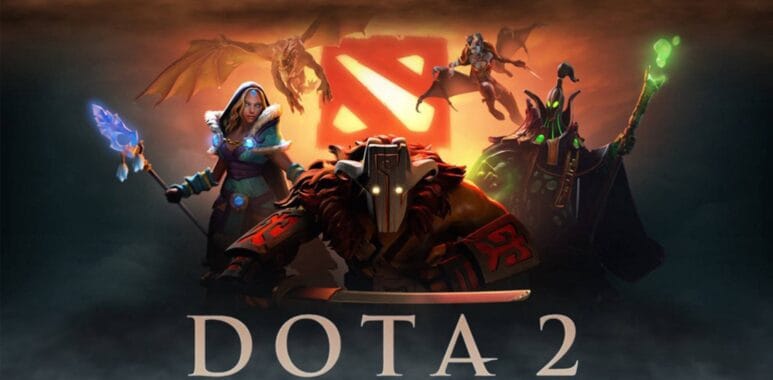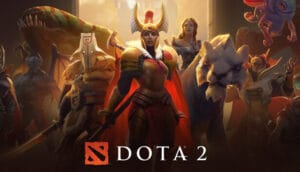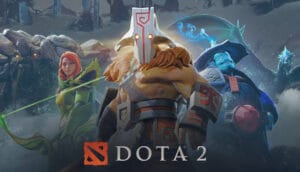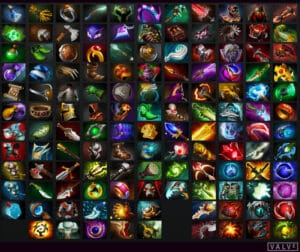
Dota: A Legendary Esport and Cultural Phenomenon
Dota: A Deep Dive into a Cultural and Esports Juggernaut
Dota, short for Defense of the Ancients, represents a journey from humble beginnings as a custom mod to its current status as one of the most iconic and competitive games in the esports industry. With its unparalleled complexity, thriving community, and massive global following, Dota continues to set the benchmark for competitive gaming and the MOBA (multiplayer online battle arena) genre.
This article explores the history, gameplay, evolution, esports scene, cultural influence, challenges, and future of this legendary franchise.

1. The Origins of Dota
Dota originated as a custom map for Blizzard Entertainment’s Warcraft III: Reign of Chaos and its expansion, The Frozen Throne. Created in 2003, the game was inspired by Aeon of Strife, a custom map for StarCraft. Steve “Guinsoo” Feak and later IceFrog were instrumental in refining and popularizing the map, which became widely known as Dota Allstars.
The premise was deceptively simple: two teams of five players, Radiant and Dire, would battle to destroy the opposing team’s Ancient while defending their own. This setup laid the foundation for the modern MOBA genre, which emphasizes teamwork, strategy, and skill over brute force.
Dota’s success paved the way for other titles like League of Legends and Heroes of the Storm. However, its complexity, unique heroes, and grassroots appeal made it a standout in the gaming world.

2. The Birth of Dota 2
In 2009, Valve Corporation acquired the rights to Dota and began developing Dota 2. With IceFrog leading the project, the standalone sequel was officially released in 2013. Valve modernized the game, introducing high-quality graphics, smoother mechanics, and new features like matchmaking and in-game tutorials.
Dota 2 retained the core gameplay of its predecessor while improving accessibility. The game also introduced the Source engine, enabling better physics, animations, and overall user experience. Despite its modernization, Dota 2 upheld the strategic depth and competitive integrity that made Dota beloved.

3. Gameplay Mechanics
At its core, Dota is a game of strategy, skill, and adaptability. Each match features unique dynamics shaped by hero choices, team coordination, and in-game decisions. Here’s a closer look at what makes Dota stand out:
Heroes
Dota features over 120 unique heroes, each with distinct abilities, roles, and playstyles. Heroes are categorized into:
- Core Roles (Carry, Mid, Offlane): These heroes scale with gold and experience, becoming powerful in the later stages of the game.
- Support Roles: These heroes focus on enabling their teammates, providing crowd control, healing, or vision control.
The diversity in hero design ensures endless strategic possibilities.
Gameplay Objectives
The primary objective is to destroy the enemy’s Ancient, but achieving this involves intricate gameplay elements, such as:
- Laning Phase: Early-game positioning and resource control in three designated lanes.
- Map Control: Vision, positioning, and securing neutral objectives like Roshan (a powerful neutral creep).
- Teamfights: High-stakes engagements where precise execution can determine the game’s outcome.
Items
Players accumulate gold to purchase items that enhance their heroes’ abilities. Proper itemization can turn the tide of a match, adding another layer of strategic complexity.

4. The Rise of Esports
The International
Dota 2 revolutionized the esports scene with the introduction of The International (TI) in 2011. Valve’s decision to crowdfund prize pools through in-game sales (via the Compendium and later the Battle Pass) allowed TI to offer record-breaking payouts. TI10, held in 2021, had a prize pool of over $40 million, setting a new benchmark for esports events.
Dota Pro Circuit (DPC)
Valve also introduced the Dota Pro Circuit (DPC), a year-long competitive structure culminating in The International. The DPC features Major tournaments and regional leagues, providing opportunities for teams from around the globe to qualify for TI.
Legendary Teams and Players
- Teams: Organizations like OG (the first two-time TI champions), Team Secret, and PSG.LGD have become synonymous with excellence in Dota 2 esports.
- Players: Icons like Johan “N0tail” Sundstein, Danil “Dendi” Ishutin, and Anathan “ana” Pham have left indelible marks on the scene, inspiring millions of fans worldwide.
Dota’s Global Reach
Unlike many esports that are regionally dominant, Dota 2 boasts a truly global audience. Southeast Asia, China, Eastern Europe, and North America are major hubs of activity, each with its distinct playstyles and meta trends.

5. Cultural Impact
The Birth of the MOBA Genre
Dota’s success inspired the creation of other MOBA games, such as League of Legends and Heroes of Newerth. It laid the groundwork for a genre that prioritizes teamwork, strategy, and individual skill.
Streaming and Content Creation
Streaming platforms like Twitch and YouTube have amplified Dota’s reach. Influential streamers, professional players, and content creators contribute to a vibrant ecosystem that extends beyond competitive matches.
Memes and Lore
The Dota community thrives on its humor and lore. From memorable lines like “It’s a disaster!” (a famous commentary moment) to in-game memes, the game has a rich cultural tapestry.
Modding and Creativity
Dota’s origins as a modding project continue to influence its community. Players frequently create custom game modes, maps, and tools, showcasing the game’s creative potential.

6. Challenges Facing Dota
Despite its success, Dota is not without challenges:
- Steep Learning Curve: Dota’s complexity can be intimidating for new players. Although Valve has introduced tutorials and guides, onboarding remains a challenge.
- Competition: Other games like League of Legends have larger player bases and more consistent updates, posing a challenge to Dota’s market share.
- Toxicity: Like many online games, Dota struggles with community behavior, including in-game toxicity and poor sportsmanship.
7. The Future of Dota
Valve remains committed to Dota, with regular updates, hero reworks, and new gameplay elements. The esports scene shows no signs of slowing, with The International and the DPC continuing to attract millions of viewers.
Future innovations could include:
- AI Integration: Valve’s collaboration with OpenAI in 2019 demonstrated the potential of AI in gaming, as OpenAI bots competed against professional players.
- Enhanced Accessibility: Improving tutorials and matchmaking could help attract and retain new players.
- Crossover Media: Expanding Dota’s universe through media like Netflix’s Dota: Dragon’s Blood anime introduces the franchise to broader audiences.
 Dota’s journey from a humble mod to a global esports phenomenon is a testament to its enduring appeal and depth. Whether you’re drawn to its strategic gameplay, rich lore, or competitive scene, Dota remains a cornerstone of modern gaming. With a vibrant community, unparalleled esports scene, and Valve’s ongoing support, Dota’s legacy as a cultural and gaming titan is assured.
Dota’s journey from a humble mod to a global esports phenomenon is a testament to its enduring appeal and depth. Whether you’re drawn to its strategic gameplay, rich lore, or competitive scene, Dota remains a cornerstone of modern gaming. With a vibrant community, unparalleled esports scene, and Valve’s ongoing support, Dota’s legacy as a cultural and gaming titan is assured.

